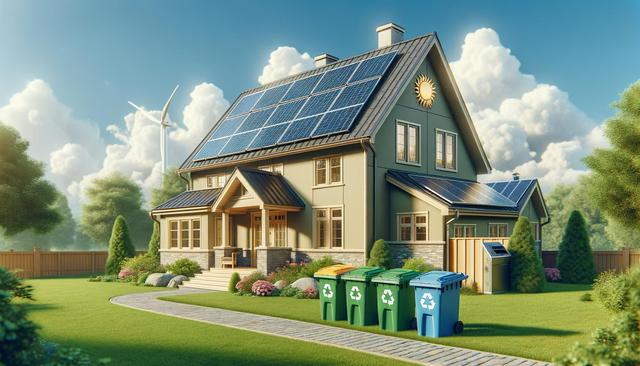Understanding the Basics of Solar Power
Solar power is a renewable energy source that converts sunlight into electricity. It’s an increasingly popular choice for homeowners looking to reduce their dependence on traditional energy sources and lower their utility bills. At its core, a solar power system for a home includes solar panels, an inverter, and often a battery storage unit. These components work together to capture sunlight, convert it into usable electricity, and sometimes store it for later use. Understanding these basics is the first step in integrating solar energy into your home.
There are two main types of solar systems commonly used at home: grid-tied systems and off-grid systems. Grid-tied systems are connected to the local utility grid and can send excess electricity back to the grid, often allowing homeowners to earn credits or reduce their electricity bills. Off-grid systems, on the other hand, are completely independent and require more components like additional batteries to ensure constant energy availability. For many households, starting with a simple grid-tied setup can be the most practical way to begin using solar energy.
Choosing the Right Solar Setup for Your Needs
Before installing solar panels, it’s important to assess your energy needs. This involves looking at your average monthly electricity usage, the position and shading of your roof, and your budget. A professional solar installer can help you determine what size and type of system will work best for your situation. Many providers offer free consultations and home evaluations to guide this process.
Some key considerations include:
- Roof orientation and angle – South-facing roofs typically receive the most sunlight.
- Shading from trees or nearby buildings – This can affect the efficiency of your panels.
- Local regulations and incentives – These can influence your total cost and system design.
Starting small with a few panels can be a smart move. This modular approach allows you to expand your system over time as your energy needs or budget change.
Installing and Maintaining Your Solar System
Once you’ve chosen your solar setup, installation is the next step. Most residential solar panel installations are completed within a few days by certified professionals. The panels are mounted on your roof and connected to the inverter and electrical system. If you opt for a battery, it will be installed inside your home or garage to store excess energy for use during non-sunny hours or power outages.
Maintenance is relatively simple and low-cost. Solar panels have no moving parts, so they require minimal upkeep. Key maintenance tasks include:
- Cleaning panels a few times a year to remove dust and debris.
- Monitoring the system’s performance regularly using the inverter’s display or a mobile app.
- Scheduling occasional professional inspections to ensure everything is functioning properly.
Warranties for solar panels typically range from 20 to 25 years, offering long-term support and peace of mind.
Maximizing the Benefits of Solar Energy
To get the most from your solar system, consider combining it with energy-efficient practices. Simple changes like switching to LED lighting, using energy-efficient appliances, and improving home insulation can reduce your overall power consumption, making your solar investment even more effective.
Additionally, many homeowners choose to install energy monitoring systems that track usage in real time. These tools can help you understand when and how you use energy, allowing you to shift usage to times when your solar panels are producing the most power. This strategy, known as load shifting, can significantly enhance your energy independence.
In some areas, net metering policies allow you to sell excess electricity back to the grid, adding a financial incentive to efficient solar use. Be sure to check with your local utility provider to understand the options available in your region.
Exploring Affordable Solar Options
Solar technology has become more accessible in recent years, with a range of affordable options available for homeowners. From leasing solar panels to community solar programs, there are flexible ways to get started without a large upfront investment. Leasing allows you to use solar power while paying a monthly fee, often with little or no installation cost. Community solar programs, on the other hand, let you subscribe to a shared solar array and receive credits on your electricity bill.
Various government incentives, rebates, and tax credits can also help offset installation costs. These programs vary by location, so it’s a good idea to research state and federal offerings. Some financial institutions even offer low-interest loans specifically for solar installations.
Here are some cost-saving options to consider:
- Federal investment tax credits (ITC)
- State and local rebates
- Solar Renewable Energy Certificates (SRECs)
- Zero-down solar loans or leases
With the right approach, solar power can be an attainable and worthwhile addition to any home.
Conclusion: Making the Transition to Solar Simple
Using solar energy at home doesn’t have to be complicated. By starting with a basic understanding of how solar systems work, evaluating your energy needs, and exploring flexible installation and financing options, you can make a confident and informed decision. Whether you’re looking to cut down on your electricity bills, reduce your environmental impact, or simply become more energy independent, a simple solar setup can put you on the right path. With minimal maintenance and growing support through incentives and technology, there’s never been a more practical time to embrace solar power at home.







